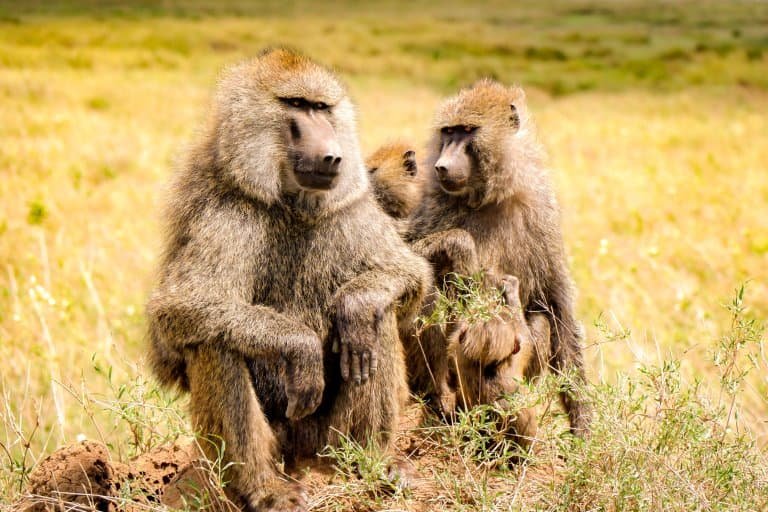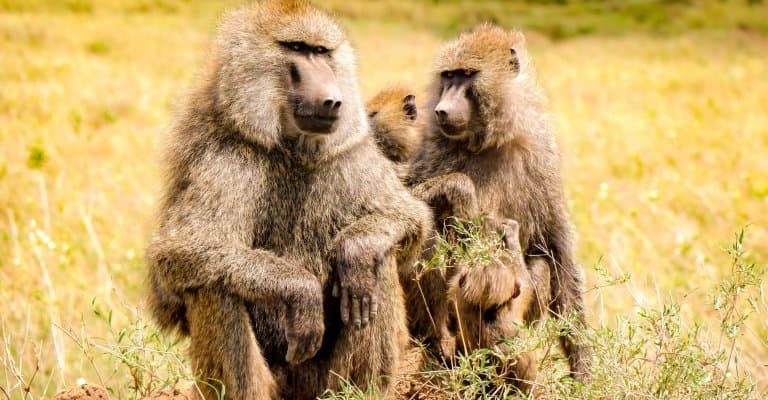
Imagine a bustling city—all the sounds, the energy, and the constant activity. Now, picture a baboon troop navigating the forests and savannas of Africa, creating their own kind of lively community. Baboons thrive in various environments, from open savannas to rocky hills, showcasing their adaptability and social nature. In this article, we’ll dive deep into where these incredible animals live and how their surroundings influence their lives.
What Are Baboons?
Before we jump into their habitats, let’s quickly recap what makes baboons so special. They belong to the genus *Papio* and are part of the Old World monkey family. There are five species of baboons, and they vary in size, appearance, and behavior. Generally, they have long, narrow faces, powerful limbs, and distinctively long tails. You might have seen them in documentaries or zoos, showcasing their social structures and intelligence.
Baboons are known for their complex social systems. They live in troops that can number anywhere from a dozen to over a hundred individuals. Their social interactions are fascinating—filled with grooming, play, and sometimes, even squabbles. This social behavior is essential for maintaining group cohesion and providing protection from predators.
Geographical Distribution of Baboons
Baboons are primarily found across Africa, with some species even extending into parts of the Arabian Peninsula. Let’s break down their distribution based on the different species:
- Olive Baboon: These are widely distributed across East and West Africa, thriving in various habitats, including savannas, grasslands, and even wooded areas.
- Yellow Baboon: Found in Eastern Africa, particularly in countries like Tanzania and Zambia, yellow baboons prefer open savanna and shrubland habitats.
- Chacma Baboon: Encountered primarily in South Africa, they thrive in mountainous regions and can often be seen foraging along cliffs and rocky terrains.
- Hamadryas Baboon: This species is mostly found in the Horn of Africa and parts of Saudi Arabia, preferring rocky, arid environments.
- Gelada Baboon: Unique to the Ethiopian Highlands, gelada baboons are special for their grazing habits and their remarkable social structures.
Understanding where baboons live helps paint a clearer picture of their adaptability. They can thrive in a range of environments, which is key to their survival.
Types of Habitats Baboons Prefer
Baboons are typically found in savannas, woodlands, and grasslands. Let’s unpack these habitats a bit more.
Savannas
Savannas are open grasslands dotted with trees and shrubs. They offer a mix of sunlight and shade, making them ideal for baboons. In these environments, baboons can easily spot predators and forage for food, from grasses to fruits. The open space allows them to move freely and maintain their social structures effectively.
Woodlands and Forests
Baboons also adapt to wooded areas where they can find shelter and food. These environments provide plenty of foliage for foraging and places to hide from potential threats. Forests can be quite dense, making it easier for baboons to climb trees and spot danger. Here, they often use the trees as vantage points to survey their surroundings.
Rocky Areas
In some regions, like the habitats of the Chacma baboon, rocky terrains are their home. These areas offer protection and vantage points to look out for predators. The rocks also serve as a source of minerals, which can be beneficial for their diet. Baboons are exceptional climbers, and rocky landscapes provide them with the perfect playground.
Climate Impact on Baboon Habitat
The climate where baboons live plays a significant role in shaping their behavior and lifestyle. Baboons prefer areas with a warm climate, which is common in much of Africa. However, different species have adapted to specific climates.
For example, the Hamadryas baboon thrives in dry and arid climates, while the Gelada baboon is adapted to cooler highland climates. These adaptations include changing their diet based on available resources and modifying their social structures to adapt to environmental pressures.
Without a doubt, climate is a crucial factor in determining how baboons thrive in their habitats.
How Do Baboons Adapt to Their Habitats?
Baboons are known for their impressive ability to adapt to changing environments. Let’s take a look at some of the ways they do this.
Dietary Flexibility
Baboons are omnivorous, which means they eat a variety of foods. Their diet includes fruits, seeds, roots, and small animals. This adaptability allows them to survive even when food sources are scarce. If you think about it, being a flexible eater is like being a survivalist in the wild.
Social Structures
Their social behavior is another critical adaptation. Living in troops helps baboons protect each other from predators. They cooperate to forage for food and raise their young, creating a sense of community that’s crucial for survival. You might say their social bonds are like a safety net in the unpredictable wild.
Physical Adaptations
Baboons have strong limbs and excellent eyesight, enabling them to navigate various terrains. Their physical build is designed for both ground and tree movement, which is essential for finding food and escaping danger. These natural tools are vital for life in the wild, just like the right equipment for a challenging mountain hike.
Conservation Efforts and Challenges
While baboons are widely distributed, they face various challenges that threaten their habitats and populations. Human encroachment, habitat loss, and climate change are significant issues.
Organizations and wildlife groups are working hard to protect these incredible creatures and their habitats. Conservation efforts focus on creating protected areas, promoting sustainable land use, and educating local communities about the importance of preserving wildlife. It’s like building a safety net for both the animals and the ecosystems they depend on.
Investing in conservation means ensuring future generations can experience the joy of seeing these playful, intelligent creatures in the wild.
Baboons live in a variety of fascinating environments, from sprawling savannas to rocky cliffs. Their ability to adapt to different habitats showcases their resilience and intelligence. Understanding where baboons thrive helps us appreciate these creatures and highlights the importance of protecting their natural homes.
So next time you see a baboon swinging from a tree or socializing with its troop, remember it’s not just a cute animal. It’s a species with rich social structures and a deep connection to its habitat. By learning about where baboons live, we can play a part in their conservation and the preservation of the beautiful habitats they call home.

